The First Afghan War - Disaster for the British
|
Few, few shall part, where many meet
The snow shall be their winding sheet,
And every turf beneath their feet
Shall be a soldier's sepulcher.
Campbell
|
| The
origins and causes of the First Afghan War, as it came to be known, can
be reduced to a few major concepts. Most had to do with British fear of
Russian power encroaching Indian territory, due to the continued
Persian-led but Russian-assisted siege
on the western Afghan city of Herat, which the Persians had long
considered their territory. In addition, many British operated
under the incorrect assumption that the Afghan people would welcome an
English puppet ruler. One has to remember that we are dealing with
people from the mid 19th Century, not the enlightened cross-cultural,
diversity-aware multi-ethnic tolerance of today's 21'st Century. (
Insert Wry Historical Irony Here..) The
actual intrigues, power struggles, treachery and bumbling political and
military decisions are fascinating, almost humorous were they not so
tragically fatal to so many innocent people, and not a little informative and
somewhat familiar - especially in light of such more recent foreign adventures
as the U.S. - Vietnam conflict, or the Russian invasion of Afghanistan
in the 1980's, the US involvement in Iraq and perhaps even our current
situation in Afghanistan. During this time period, one has to remember
that there was no real state of Afghanistan per se, the British East
India Company ruled most of India as a 'trading outpost", and the
British Crown wanted only that the EIC not get involved in more costly
wars. There was both a government (Queen's) army and an EIC military
presence in India, but the vast majority of soldiers were Hindu, serving
under English officers.
The story of
this, one of Britain's worst military disasters ever, is
fascinating - but first, it will help to go over the cast list in our
program - stick with me on this, it gets more and more interesting... |
|
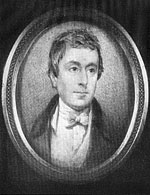
|
- George Eden, first
Lord of Auckland, the East India Company's Governor-General of India. Somewhat wishy-washy,
not well liked among the military staff, tended to be bossed around by his
unmarried sisters-
- Emily and Fanny
Eden, both of whom accompanied
Lord A. to India and set about dusting the place off.
|
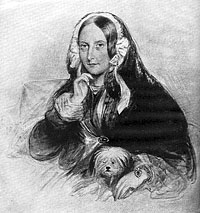 |
- William Hay
Macnaghten, political secretary to Auckland and general smarmy
aide-de-camp.
Very ambitious, unwilling to listen to military
advisors, he had the ear of Auckland and could talk him into most
anything. And would. A dedicated Russophobe, he formed misguided
opinions as to how eagerly the Afghan people sought British rule,
and now easy it would be to place and maintain a puppet prince in
Kabul. Macnaghten was good friends with...
|
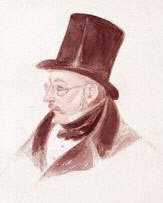 |
|
|
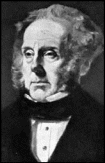 |
-
Alexander "Bokhara" Burnes,
a wildly popular, ambitious young Political Agent, noted above,
envied by Macnaghten for his boisterous self-promotion, and success
with women.
- Mohan Lal, Kashmiri interpreter, spy, and right-hand-man to Burnes.
|
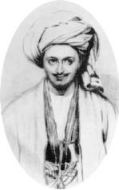 |
- Dost Mohammed Khan, Emir of Afghanistan, of the Barakzai clan, who had come
to unsteady power after...
|
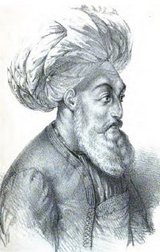 |
- Shah Shujah, of the
Durrani clan, had been forced into exile in 1809, taking his
600-woman harem and most of the crown jewels with him, seeking
refuge with the famed Sikh...
|
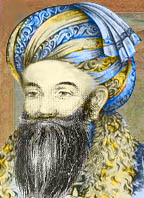 |
- Maharajah Ranjit
Singh, aging but charismatic leader of the Sikh, sworn enemies of
the Moslem Afghans and uneasy buffer between Afghanistan and India
in the independent state of Punjab. He took the crown jewels from Shujah,
which included the fabled Koh-i-noor diamond, at the time the
largest in the world, as rent and room and board for the harem.
After a few years, he
got so sick and tired of Shah Shujah mucking about with Afghan spies and all
that he kicked him out the country and Shujah ended up in exile in
Ludhiana, in British India, where he wheedled a small pension
out of Lord Auckland, and the Brits looked the other way when
it came to his harem.
Singh was noted for employing foreign
adventurers and military men as advisors and generals, having had
American, English, Italian, German and French officers in his
employ, two of whom are pictured below. Emily Eden described him as
a "dissolute old man with one eye and grey whiskers that made him
look like a mouse."
|
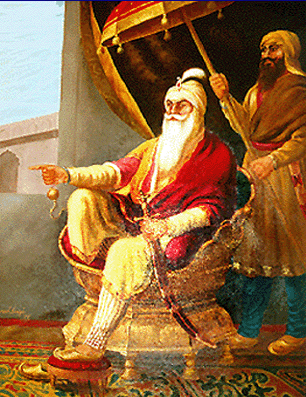 |
- Alexander Gardner, (or GARDINER)
Scottish-American mercenary, commanding Ranjit Singh's powerful and
well-trained artillery forces, in a uniform of his own design,
including tartan turban. Gardiner played a fascinating and
little-remembered part in this drama, having started in the Indian
Army, then gradually working his way around the subcontinent. He
lived to a ripe old age, setting up shop in Srinagar, the capital of
the state of Kashmir. He lived well into his 90's,
entertaining nearly every traveler and explorer who came through
Kashmir on the way to the north and west.. Very little is known
about his life, as many of his stories were "discounted" by
contemporaries, He did write a book after Singh's death, "The Fall
of the Sikh Empire", reprint copies of which may be found after
diligent search. If his stories are true, Gardiner explored more of
the Hindu Kush, the Pamirs and the otherwise unknown and forbidden
western Himalaya than anyone before him, and his travels were not
equaled in scope for half a century. His problem was, he didn't
explore to explore, he just tried to stay onestep ahead of whoever
was chasing him. Let's just say not all of his behavior was
exemplary...Bottom right is a picture of him during the service to
Ranjit Singh, surrounded by other members of the Sikh army, probably
taken in the late 1830s or early 1840s.
Note : Unfortunagely, OUR
Alexander Gard(i)ner shares his name with a noted American Civil War
photographer. They are NOT the same person, obviously, but Google
and the internet has far more information on the photographer than
on the raconteur...
|
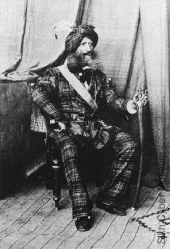
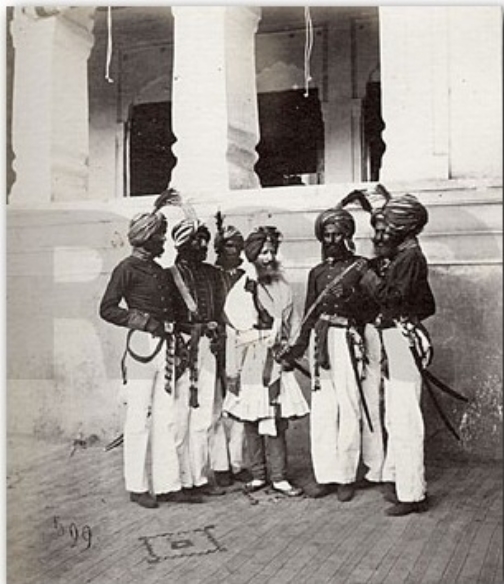 |
-
Josiah Harlan,
American Quaker, and "The Man Who Would be King" - Born
near my home town in Chester County, Pennsylvania, he had sailed to
India to make his fortune when he got a "Dear Harlan" letter from
his girl back home. He He joined the army of the British East India
company as a (completely untrained) surgeon, then more or less
deserted a few years later, Harlan
was enlisted by Shah Shujah to attempt an earlier overthrow of Dost
Mohammed in the 1830s. Arriving as the first American ever in
Afghanistan, he instead came to respect and enjoy Dost. The Afghan
king liked the odd man, proclaiming him "Prince of Ghor" in
perpetuity. He was the first man to raise the Stars and Stripes in
Central Asia. After a few years service to Dost Mohammed,, the bored Harlan went to Ranjit
Singh, who also enlisted his services as a spy, trader, and
explorer. Arriving back in Kabul just as the Army of the Indus
did, the English put him on the first boat
back to Philadelphia. He later wrote a scathing history denouncing
the British excursion, and was roundly vilified in turn by the
English press and political leaders. He
fought in the American Civil War, tried to interest the US
Army in using camels in the desert southwest, and died a forgotten
man in San Francisco in 1871. He was perhaps the only player to have been employed
by all four parties to this little exercise - Dost Mohammed, Shah Shujah,
Ranjit Singh, and the British. Only recently has this fascinating
figure in American history started to be remembered, and a great
biography of him was recently written by Ben Macintyre,
"The Man Who Would Be King." Highly Recommended.
|
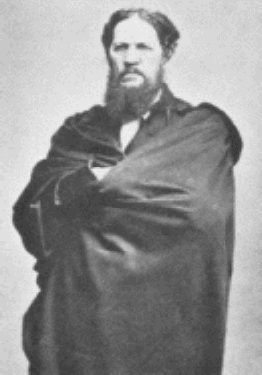 |
|
Principal Settings:
- Lahore - Ranjit
Singh's capital in the Punjab. The Punjab encompassed most of what
is now Pakistan, from the Karakoram Mountains in the north, to the
Arabian Sea-port city Karachi.
- Peshawar - major
Punjabi city on the east side of the Khyber Pass, run by Dost Mohammed's
rival half-brother Sultan Mohammed Khan, now controlled by the
Sikhs, to the major consternation of Dost Mohammed.
- Kabul - in northern
Afghanistan, where Dost Mohammed lived. I hesitate to call it
"the capital" since there was not really much political
power there.
- Herat - major town
in western Afghanistan, usually Persian in loyalty, now under siege
by a joint Persian/Russian force, held by the Saddozai clan under
Shah Kamran, sworn enemy of the Barakzai and the Durrani.
- Kandahar - major
town in southern Afghanistan
- Jalalabad - first
big city on the western side of the Khyber Pass in Afghanistan.
- Calcutta - British
capital of India, way over on the eastern coast of India on the
Bengal Sea
- Delhi - Major India
city in the northwest, about 300 miles southeast of the Khyber Pass
|
| So,
when our program begins, we have Dost
Mohammed in Kabul entertaining Burnes and the Russian agent Vitkevitch**; Shah Shujah in exile in
the Indian city of Ludhiana with his harem of 600 women but minus the Koh-i-noor, crafty old Ranjit Singh in
Lahore,and the Persians and Russians and one of Dost
Mohammed's brothers laying siege to Herat, Governor General Auckland, his sisters
& Macnaghten in Calcutta, and Gardiner and Harlan floating
around here and there getting into trouble.
The Punjabi Sikhs had taken control of
Peshawar, with the cooperation of another of Dost Mohammed's
half-brothers,
irritating the hell out of Dost Mohammed. Shah Shujah wanted desperately
to be back in control in Afghanistan. The British were peeing their
pants over the Russians in Herat and Dost Mohammed in Afghanistan.. And Ranjit Singh was sitting back with
an amused grin...
In January of 1838, on the
advice of the Russophobic and somewhat power-mad Macnaghten, PM Auckland wrote Dost Mohammed a rather condescending letter telling him
to kick the small Russian party out of Afghanistan, and give up his
claims to Peshawar, or else. The British were desperate to keep Singh
and the Sikh as "'friends", and did not want to do anything to offend
them. On the other hand, they did not want a Russia-friendly Afghan
nation on their western border either. They were in an odd situation,
being one of the most powerful and rich empires then extant, trying to
curry the favor of two backwater, despotic kingdoms that hated each
other with a passion, had little to offer Britain, no real strategic
importance (as it turned out), and absolutely no concept of Western
diplomacy, ethics, morality, or justice...The Western mind still to this
day hasn't improved, or learned, much.
Mohammed and Burnes were both taken aback
by the letter, and Burnes was loath to leave his friend and the man he
thought best suited to rule Afghanistan. The British recalled him in
April 1838.
The British, in desperation,
landed a naval and marine force near the head of the Persian Gulf and
managed to get the Persian Shah to give up on his somewhat stalled siege
of Herat and force the
Russians to disavow their own part in the deal. But they (Auckland and Macnaghten)
were peeved at Dost Mohammed for not fighting the Russians for
them. The ambitious and somewhat Machiavellian Macnaghten hatched
a plan which, while perhaps not with the full support of Auckland, at
least made the Governor General realize that if it succeeded he will
have handled the Russians and the Afghans in one fell swoop.
They asked Ranjit Singh
and his Sikh armies to invade Afghanistan for them, and install old Shah
Shujah on the throne. In return, the new Shah would let Singh retain
control of Peshawar and the area around it. Ranjit
Singh, whose western frontier bordered Afghanistan and who had a healthy
respect for the fighting spirit of the Afghans, refused to allow his
troops to be used in such an adventure, besides which he already had
Peshawar anyway.
Macnaghten still pushed, and
after parlaying with Shah Shujah, managed to get Singh to sign off on a
secret plan to re-install Shujah on the throne in Kabul. Singh did not have to supply
any army, he would be able to retain Peshawar in perpetuity, and would
be rid of at least one, if not two troublesome Afghans and a large
portion of their army, an army he respected for their toughness and
ferocity. Auckland, on October 1, 1838 published a document known as the
'Simla Manifesto', stating that Dost Mohammed, because he flirted with
the Russians, and would not promise not to attack India (the Afghans had
sacked and burned Delhi in the 1750s), should not be allowed to remain
as the leader of Afghanistan, and that the British would replace him
with Shah Shujah. For sheer cheekiness and audacity, this document ranks
above nearly every official British statement in the last two hundred years. Burnes
was rightfully horrified at his Governor General's idiocy, and pleaded with Auckland and Macnaghten to reconsider,
but the latter, jealous of Burnes's earlier success and desirous himself
of some power and acclaim, would not budge. Accordingly, they began
gathering up an Army to march to Kabul and install their puppet, Shah
Shujah, as the Emir Of Afghanistan. |
|
Next - The Army of the Indus |
|
** The
story of this agent, variously Russian-ized as Vitkevitch, or perhaps
the Polish Witkiewicz; is also fascinating - some authors have him as a
Lithuanian, some as a Polish nobleman; some have him posted to Kabul as
punishment, some as reward. In any event, he and Burnes has several
gentlemanly get-togethers, only half trusting each other, and as the
British closed in, Vitkevitch/Witkiewicz was recalled. His death just a
few months later, of a suspicious "suicide" in St. Petersburg
cries out for investigation...
|

|